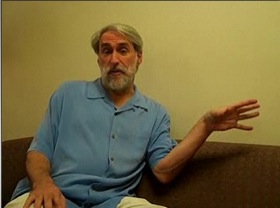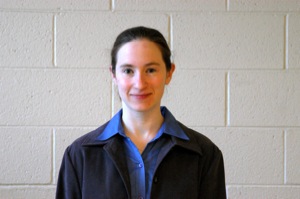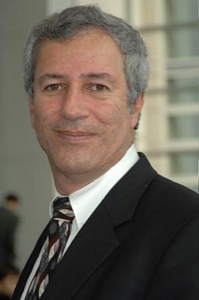Daniel G. Nocera is the Henry Dreyfus Professor of Energy at the Massachusetts Institute of Technology, Director of the Solar Revolutions Project and Director of the Eni Solar Frontiers Center at MIT. His group pioneered studies of the basic mechanisms of energy conversion in biology and chemistry with primary focus in recent years on the generation of solar fuels. Solar fuel reactions require the coupling of multielectron processes to protons, which are energetically uphill, thus requiring a light input. Nocera has pioneered each of these areas of science. Most examples of multielectron photoreactions have originated from his research group in the past decade. This work has relied on the generalization of the concept of two-electron mixed-valency in chemistry. He created the field of proton-coupled electron transfer (PCET) at a mechanistic level with the publication of the first ultrafast laser study of an electron transfer through a hydrogen bonded interface. With the frameworks of multielectron chemistry and PCET in place, he has recently accomplished a solar fuels process that captures photosynthesis and he has constructed an artificial leaf, which uses sunlight to directly produce the solar fuels of hydrogen and oxygen from water with sunlight as the energy input. This discovery of artificial photosynthesis sets the stage for a storage mechanism for the large scale, distributed, deployment of solar energy. He has been awarded the Eni Prize (2005), IAPS Award (2006), Burghausen Prize (2007), Harrison Howe Award (2008), Science Top 10 (2008), Discover 100 (2008), ACS Inorganic Chemistry Award (2009), the United Nations Science and Technology Award (2009), the Elizabeth Wood Award (2010), MJ Collins Award (2010), Roseman Award (2010), and the Remsen Award (to be given 2012) for his contributions to the development of renewable energy. He is a member of the American Academy of Arts and Sciences and the U.S. National Academy of Sciences. He was named as one of Time Magazine's 100 Most Influential People in the World and was 11th on the New Statesman list of the most influential people in the world.
Nocera has been an organizer to and primary author of four DOE Basic Research Need workshops: Hydrogen, Solar Energy, Energy Storage and Catalysis and he was a primary author of the Grand Challenges report (Directing Matter and Energy: Five Challenges for Science and the Imagination) to the DOE. He was also an author of the report to chart a course for energy research at MIT and he is a lead author on the MIT Study on the Future of Solar Energy. He began the first Gordon Research Conference (GRC) on Renewable Energy, which was held in January 2007. He has designed permanent exhibits on energy for the MIT Museum, the Boston Museum of Science and Oregon Museum of Science and Industry. Nocera has supervised 115 Ph.D. graduate and postdoctoral students, 41 of which have assumed faculty positions, published over 300 papers, given over 600 invited talks and 61 named lectureships.
Nocera is a frequent guest on TV (CNN, ABC Nightline, PBS, ABC Nature's Edge, Jim Lehrer News Hour, This New House, NOVA, CBS, CNBC, Discovery Channel, The Science Channel, Brink and Plum in the U.S. and Explora and RAI in Europe), radio (NPR, Bloomberg News, CBS, CBC, BBC, All Things Considered, Here and Now, Climate Connections, Voice of America, Radio New Zealand) and is regularly featured in print (New York Times, National Geographic, Forbes, Discover, Wall Street Journal, Time Magazine, The Statesman, The New Republic, U.S. News and World Report, ON, Outside Magazine, Wired, Technology Review, National Review). His 2006 PBS show was nominated for an Emmy Award. He worked with Robert Krulwich of ABC News to develop the pilot that was used to launch the PBS NOVA show, ScienceNow, which is now a regularly scheduled science program on PBS. He also worked with Mr. Krulwich and the web designer OddTodd to develop a five part series on The Lifestyle of Carbon. He opened the Mountain Film Festival 2007 in Telluride CO, the Aspen Forum in Aspen CO in 2008 and 2009, and the World Science Festival in NYC in 2008. He sits on several advisory boards and is currently working with several artists in the U.S and abroad, actors and producers in Los Angeles and major business leaders in the U.S. to help them develop a position that contributes positively to the energy and sustainability challenge confronting this planet. In 2008, he founded Sun Catalytix, a company committed to bringing personalized energy to the non-legacy world.
2013 Graduate Student Symposium
Hosted By: University of California, Irvine


Melanie S. Sanford is currently the Moses Gomberg Collegiate Professor of Chemistry and Arthur F. Thurnau Professor of Chemistry at the University of Michigan, Ann Arbor. She was born in New Bedford, MA in 1975 and attended Classical High School in Providence, RI (Class of 1992). She received her B.S. and M.S. degrees at Yale University in 1996 where she carried out undergraduate research in the laboratory of Professor Robert Crabtree. She pursued graduate studies at the California Institute of Technology working with Nobel Laureate Professor Robert Grubbs. Following postdoctoral work at Princeton University with Professor John Groves, she joined the faculty at the University of Michigan in the summer of 2003 as an Assistant Professor of chemistry. She was promoted to associate professor in 2007, to full professor in 2010, to Arthur F. Thurnau Professor of Chemistry in 2011, and to Moses Gomberg Collegiate Professor of Chemistry in 2012.
Professor Sanford has been recognized with a number of awards, including a Camille and Henry Dreyfus New Faculty Award, a Beckman Young Investigator Award, a Research Corporation Cottrell Scholar Award, and a Presidential Early Career Award in Sciences and Engineering, and has also been named an Alfred P. Sloan Foundation Research Fellow. In 2008 she received an Arthur Cope Scholar Award from the American Chemical Society, in 2009 she was the recipient of the BASF catalysis award. In 2011 she received the American Chemical Society Award in Pure Chemistry and was also named a MacArthur Foundation Fellow.
Research in the Sanford group aims to develop new chemical reactions that enable the production of pharmaceuticals, agrochemicals, and fuels in a more efficient and environmentally friendly manner. More specifically, her research focuses on converting simple and readily available starting materials (for example carbon dioxide, carbon-hydrogen bonds) into much more complex products through the use of transition metal catalysis.
Kirk Froggatt is a Sr. Fellow and Gemini Chair in Technology Management at the University of Minnesota’s Technological Leadership Institute where he teaches undergraduate, graduate and professional education courses and seminars in leadership, innovation management, and organizational effectiveness.
Previously, Kirk spent 25 years in a variety of leadership roles at several global technology companies including HP, Silicon Graphics, Yahoo!, Agilent Technologies and Ecolab. The common theme throughout Kirk’s career has been the need to develop engineers and scientists into innovation leaders capable of translating technical ideas into profitable growth opportunities.
Kirk has an undergraduate degree in Industrial / Organizational Psychology and completed his graduate studies in Organizational Behavior and Strategic Management at Purdue University’s Krannert Graduate School of Management.
Professor Matt Law joined the Chemistry Department at the University of California, Irvine in 2008. He received his Ph.D. in Chemistry from the University of California, Berkeley in 2006, where he investigated the synthesis, properties, and device applications of oxide nanowires under the direction of Peidong Yang. For this work, he was named a 2005 Young Investigator by the Division of Inorganic Chemistry of the American Chemical Society and was awarded the 2006 IUPAC Prize for Young Chemists. His postdoctoral research with Arthur Nozik at the National Renewable Energy Laboratory focused on the development of quantum dot solar cells and photoelectrochemical water splitting devices.
Professor Law’s research interests are driven by the challenges of energy conversion and storage, chemical sensing, pollution remediation, and the conservation of biodiversity. His research group at UC Irvine focuses on the development of new materials and devices for solar energy conversion, including nanostructured solar cells, earth-abundant thin-film photovoltaics, and water splitting cells. He received a DOE Early Career Award in 2010 and has published over 35 papers (cited more than 8000 times) and six patents in the areas of nanoscience and photovoltaics.












Dr. Nathan Lewis, the George L. Argyros Professor of Chemistry, has been on the faculty at the California Institute of Technology since 1988 and has served as Professor since 1991. He is the Principal Investigator of the Joint Center for Artificial Photosynthesis, the Energy Innovation Hub in Fuels from Sunlight, and has also served as the Principal Investigator of the Beckman Institute Molecular Materials Resource Center at Caltech since 1992. From 1981 to 1986, he was on the faculty at Stanford, as an assistant professor from 1981 to 1985 and as a tenured Associate Professor from 1986 to 1988. Dr. Lewis received his Ph.D. in Chemistry from the Massachusetts Institute of Technology.
Dr. Lewis has been an Alfred P. Sloan Fellow, a Camille and Henry Dreyfus Teacher-Scholar, and a Presidential Young Investigator. He received the Fresenius Award in 1990, the ACS Award in Pure Chemistry in 1991, the Orton Memorial Lecture award in 2003, the Princeton Environmental Award in 2003 and the Michael Faraday Medal of the Royal Society of Electrochemistry in 2008. He is currently the Editor-in-Chief of the Royal Society of Chemistry journal, Energy & Environmental Science. He has published over 300 papers and has supervised over 60 graduate students and postdoctoral associates.
His research interests include artificial photosynthesis and electronic noses. Technical details of these research topics focus on light-induced electron transfer reactions, both at surfaces and in transition metal complexes, surface chemistry and photochemistry of semiconductor/liquid interfaces, novel uses of conducting organic polymers and polymer/conductor composites, and development of sensor arrays that use pattern recognition algorithms to identify odorants, mimicking the mammalian olfaction process.



